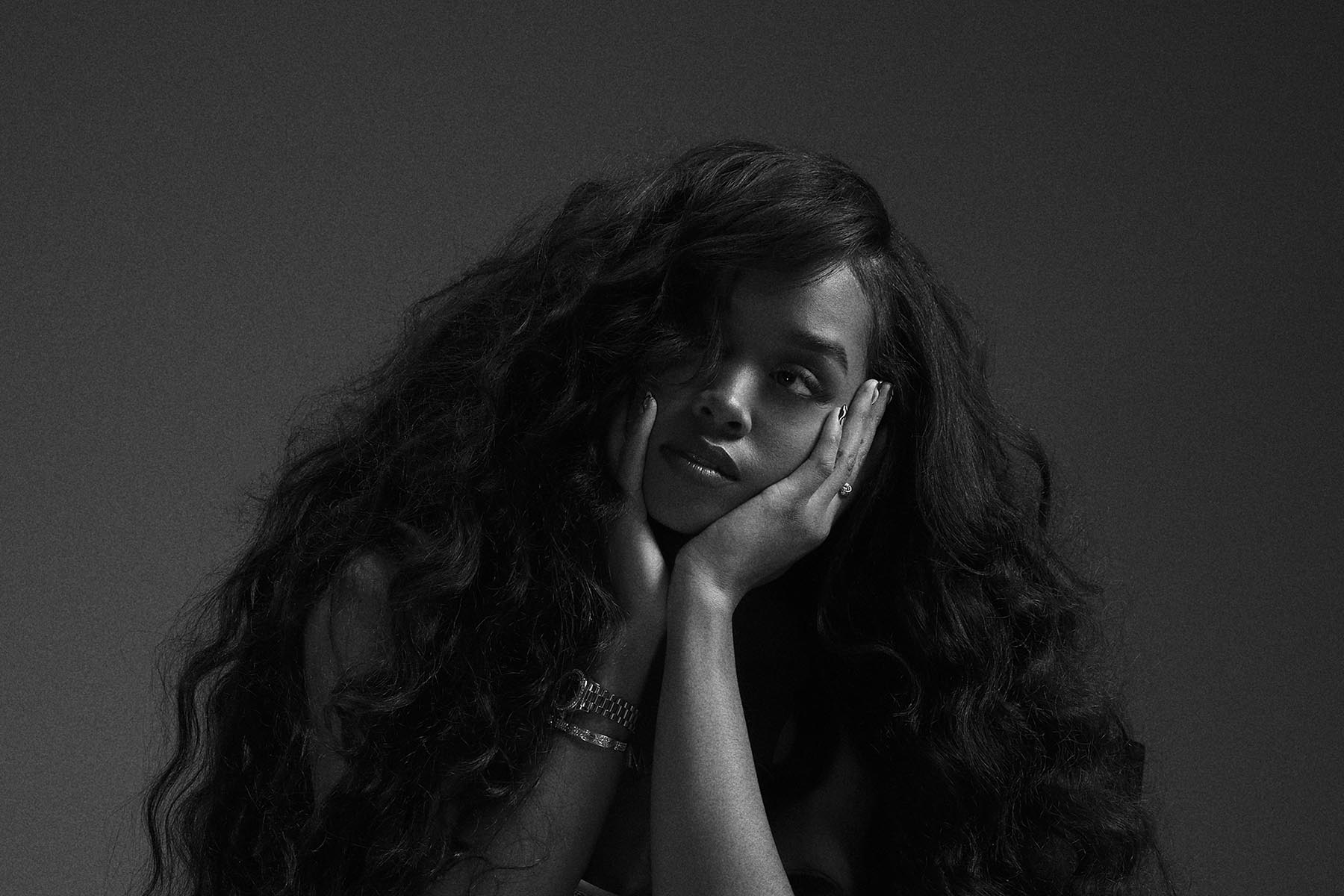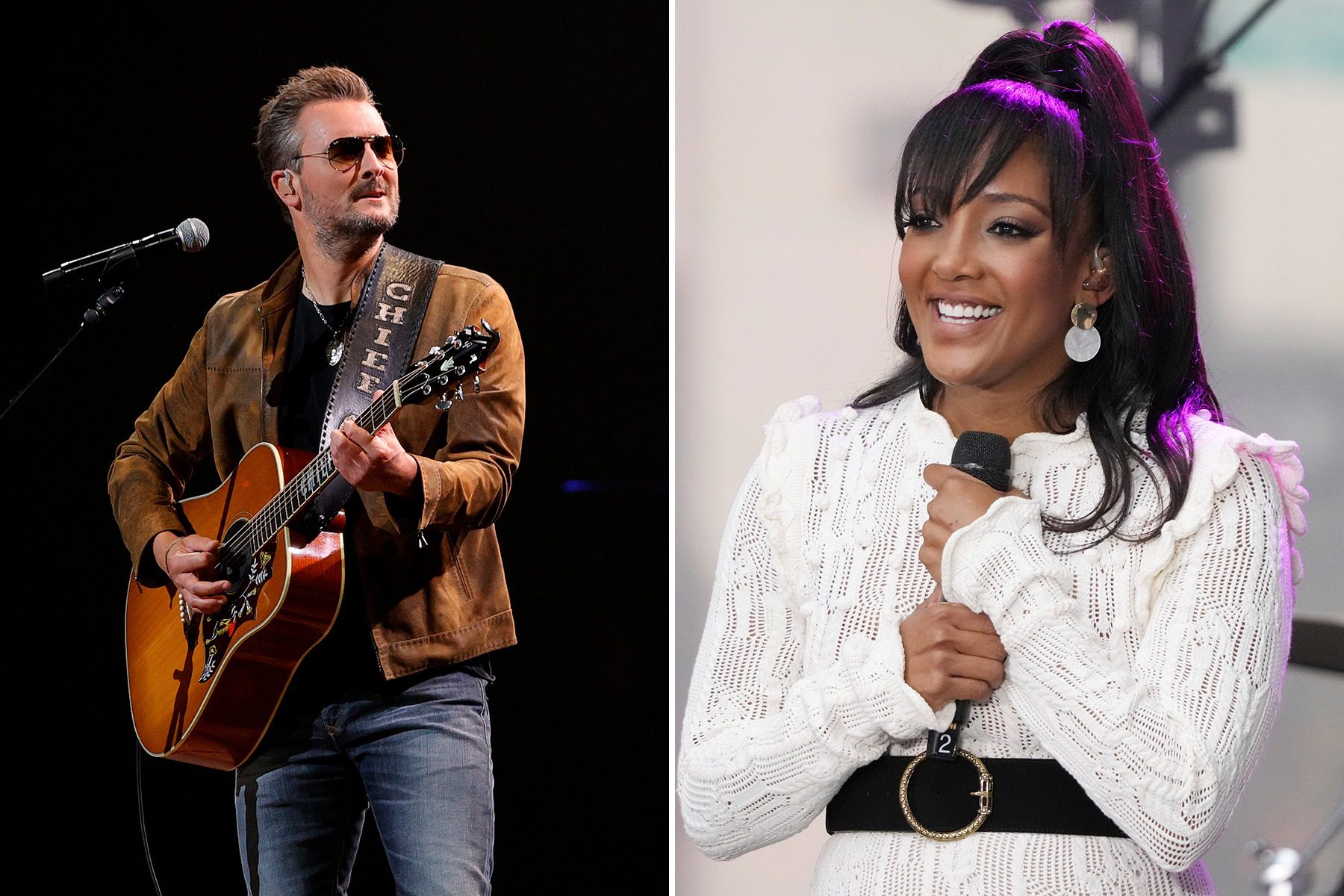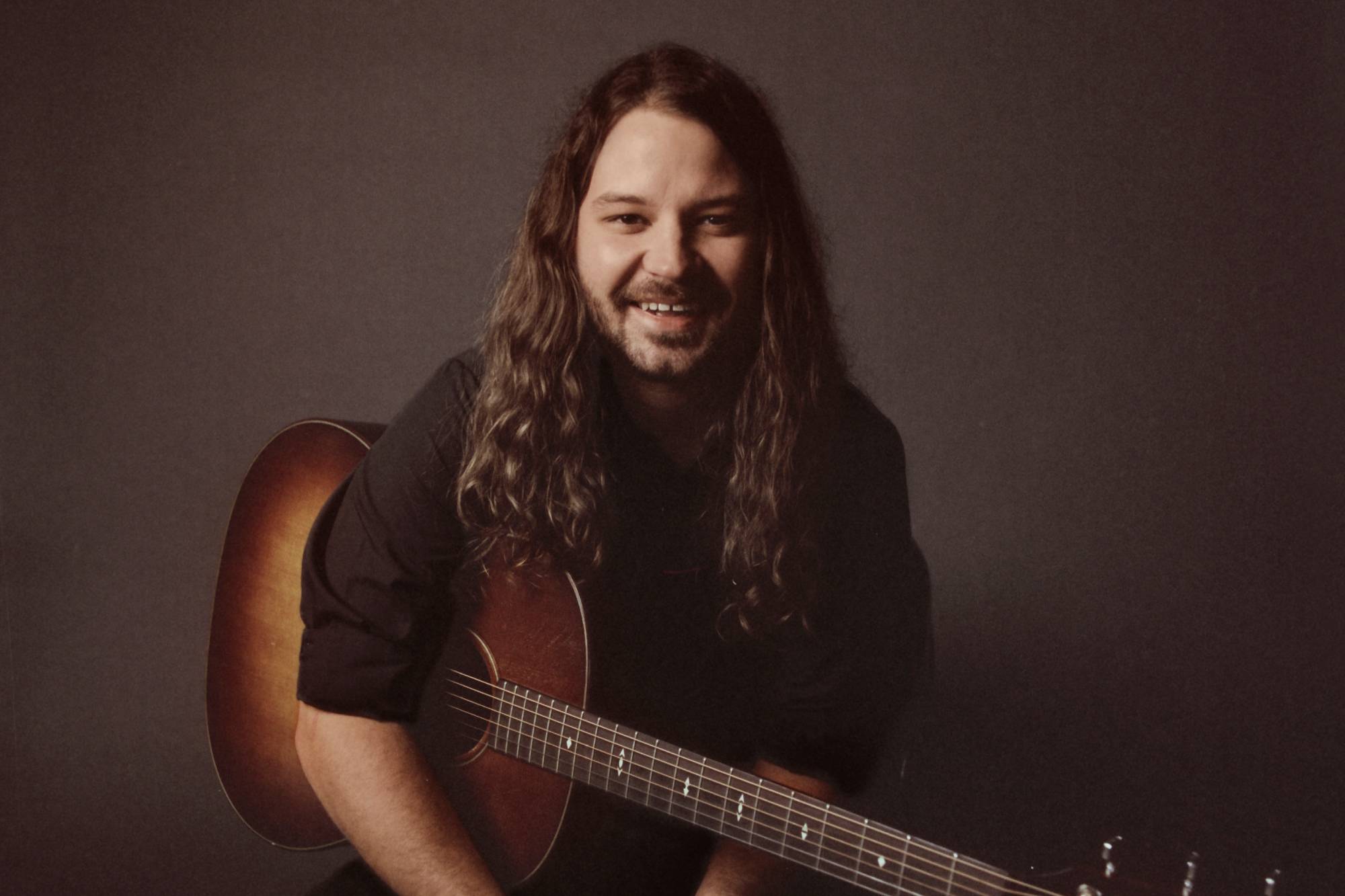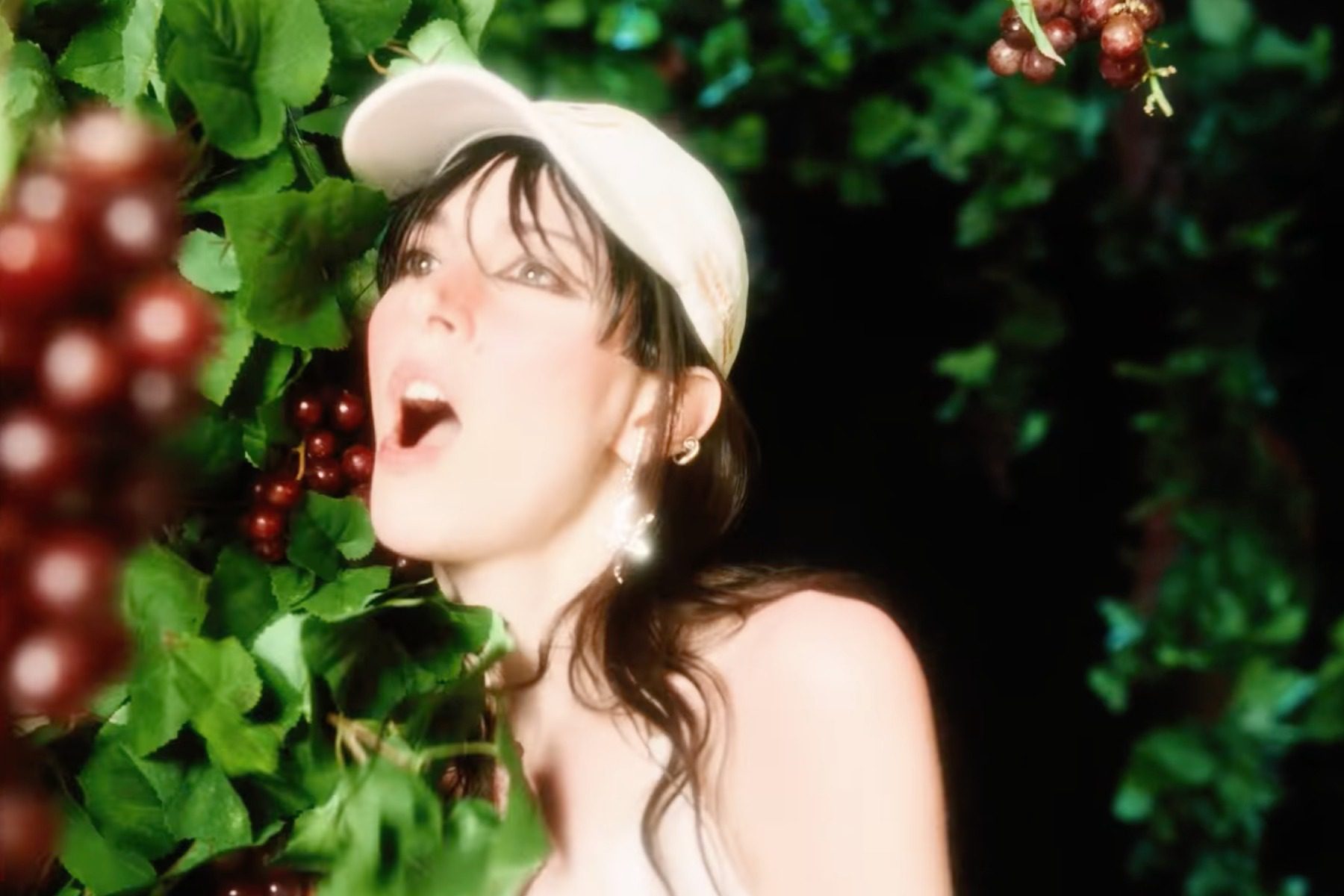
Grammy Contenders 2022: H.E.R. Declares ‘R&B Is Not Dead’
This piece is part of IndieLand’s second annual Grammy Preview special issue, released ahead of the start of first-round voting. We spoke to some of the year’s biggest artists about the albums and singles that could earn them a nomination — or even a statue come January — and delved into the challenges facing the Recording Academy, providing a 360-degree view of what to watch for in the lead-up to the 2022 awards.
Artist: H.E.R.
Eligible for: Back of My Mind, “Damage,” “Fight for You”
H.E.R., born Gabriella Wilson, is only 24 years old, but she’s been a professional musician for more than a decade, signing a record deal as a 14-year-old prodigy, and playing with her dad’s cover band even before that. This year has been the biggest of her career so far: Even before the June release of the excellent Back of My Mind, which she considers her first full album (after a series of EPs and compilations), she had already won a Song of the Year Grammy, for the one-off 2020 Black Lives Matter–themed single “I Can’t Breathe,” and Best Original Song at the Academy Awards for “Fight for You,” from Judas and the Black Messiah. Her goal for the long-in-the-works album, a ballad-packed, seamless melding of retro leanings and modern production, was simple: “I wanted to make great music,” she says.
blogherads.adq.push(function () {
blogherads
.defineSlot( ‘medrec’, ‘gpt-dsk-tab-article-inbody1-uid0’ )
.setTargeting( ‘pos’, [“mid-article”,”mid”,”in-article1″,”mid-article1″] )
.setSubAdUnitPath(“music//article//inbody1”)
.addSize([[300,250],[620,350],[2,2],[3,3],[2,4],[4,2],[640,250]])
;
});
Despite her current triumphs and a Prince-worthy slate of talents — she sings and writes, plays bass, keyboards, guitar, and drums — she faced a surprising amount of doubt along the way. “When I did get signed, and I was just developing all those years and not putting out any music, not doing anything but creating and working on my craft, it was like, ‘Oh, she’s gonna be shelved,’ ” she says. “And people told me not to play guitar onstage! Like, ‘That’s going to go over the kids’ heads.’ ”
(To hear H.E.R.’s entire interview on our IndieLand Music Now podcast, press play above, or listen on Spotify or Apple Podcasts.)
H.E.R. likes the idea of embracing full-on retro soul, and “would love to” someday make a rock album, but her current project is an in-progress reggae LP. “It’s going to be roots, but also dancehall, but also R&B mixed with reggae,” she says. “You’ll get different vibes. I think from here, it’s whatever I feel.”
Your new album demonstrates your mastery of using live instruments and a retro feel while still sounding current. What’s your secret to keeping that balance?
To me, it’s all about the feeling. I’m a soul baby. I live for late-Sixties and Seventies soul. So I grew up listening to Sly Stone and Con Funk Shun, who are both from the Bay Area. That’s just in my DNA. And James Brown and all those guys. So when I got older, I started to feel it come through me. I started to feel myself using that foundation without trying. Whether it’s the approach of how behind I am on the beat when I’m playing the bass, or when I’m singing a note, how flat on purpose I want to be to give you that feeling and that kind of pain like Aretha [Franklin] did, or Mary [J. Blige] did. So, I think that’s kind of how you connect the two. And I’m all about mixing the programmed drums and the real bass line or real keyboard parts.
Your song “Bloody Waters,” which has great playing from Thundercat on bass, really nails a Marvin Gaye vibe. How deliberate was that?
Yeah, Thundercat is amazing. It’s funny, when we were creating the record, he started playing and I was like, “I want it to feel like James Jamerson,” you know, who played on all the Motown records. And he was like, “Say less,” and he started going in and we were going crazy. And I didn’t even think about Marvin when I was creating it. Afterwards, I was like, “Oh, it does kind of give me that vibe.” But I think what Marvin did, and what I’m inspired by, in his music is being able to sing something really sweetly and nice and light and almost feel-good, but saying things that are really painful. That’s a very hard thing to do.
blogherads.adq.push(function () {
blogherads
.defineSlot( ‘medrec’, ‘gpt-dsk-tab-article-inbody2-uid1’ )
.setTargeting( ‘pos’, [“mid-article2″,”mid”,”in-article2″,”mid-article”] )
.setSubAdUnitPath(“music//article//inbody2”)
.addSize([[300,250],[300,251],[620,350],[2,4],[4,2],[3,3]])
.setLazyLoadMultiplier(2)
;
});
Do you feel like R&B as a genre is neglected?
I thought it was important for me to make an R&B album and to celebrate R&B. That’s kind of why I did this album the way I did it. It definitely gets a little overshadowed. But, you know, things change, trends change. At one point it was rock; at one point it was pop music — that was all you heard on the radio. Lights On Fest, my festival [which this year was set to feature Bryson Tiller, Chloe Bailey, and others, but was postponed due to the pandemic], is really giving those artists an opportunity to celebrate themselves and be heard, and to really show people that R&B is not dead. Because people always say that, but it’s never dead. It lives in everything.
Thanks to your dad, you listened to the blues when you were young — Buddy Guy, B.B. King — and I feel like I can hear that in your music.
I went to a Buddy Guy concert when I was seven years old, and I got to meet him and go backstage. He signed a guitar strap for me, and I still have it. Since I was young, I was writing this music that was very painful and emotional. Even if I had never been through anything crazy. Never been married or anything like that. But women who have been relate to it, I guess. And I think it’s just from listening to the blues. Because of how much emotion is in the blues.
You’ve had a couple of successful collaborations with DJ Khaled recently — one on his project, one on your project. Obviously, he’s a whole other world. How did that all work?
I stepped out of my comfort zone. And I think that’s why I appreciate DJ Khaled so much. He saw something in me that I wouldn’t necessarily have seen in myself. And then I was open to it. He wanted to bring something unexpected for me. And that’s what I appreciate so much — he saw that I could push myself. I love what he does; I love his energy. I mean, who doesn’t admire how everything is a movie around him? I was in Miami, and he called me and said, “Come to my house.” And so we went, and of course they had the whole chef eight-course meal. He played me the records. First was “We Going Crazy,” and it wasn’t finished yet. It was the beginning of the idea, and I already could feel how big of a record it was. It’s different for me energy-wise — I don’t know why I gravitated towards it so much. I always wanted to do a song with Migos. And then “I Can Have It All” comes on, with the Beanie Siegel sample, and I was so excited. It was an opportunity to, y’know, just talk my stuff a little bit. I went back to New York and did my thing on them. And I got the fire emojis back!
You won an Oscar for “Fight for You,” from the Judas and the Black Messiah soundtrack. How did that song come together?
I learned so much through creating that song. I didn’t know too much about the Black Panthers. So watching the film, I was like, “Oh, my gosh, this story is crazy. And why am I just now learning about this?” Look at all the good that the Panthers did. And the fact that they took that away, that the narrative was changed throughout the years. So watching that film just opened my eyes a lot. And it made me sad, but also hopeful. And so I felt like the song needed to reflect a personal feeling to really reach people, and really go there, with the music that I grew up listening to. Today we’re seeing these protests, seeing people fight for this generation. The struggle continues, the fight continues. And the hope continues. And that’s the most important part, which is why the music has to feel good. So the music got to make you want to dance, you know, and take you away from the pain a little bit, but also remind you of the pain and remind you how far we’ve come and how far we’ve got to go.
blogherads.adq.push(function () {
blogherads
.defineSlot( ‘medrec’, ‘gpt-dsk-tab-inbodyX-uid2’ )
.setTargeting( ‘pos’, [“mid”,”mid-articleX”,”in-articleX”,”mid-article”] )
.setSubAdUnitPath(“music//article//inbodyX”)
.addSize([[300,250],[300,251],[3,3],[620,350]])
.setLazyLoadMultiplier(2)
;
});
As a kid, you started off learning piano and went on to learn bass, guitar, and drums. How did that journey work?
One reason I started playing the bass was, I think we were in a grocery store or something. “Boogie Oogie Oogie” by A Taste of Honey was playing, and my mom was like, “Oh, I want you to learn this song.” And I told her, “Oh, Mom, this is like a bass-driven song. As you know, I don’t play the bass.” And she was like, “OK,” and so we went to the Guitar Center that night, and I got a bass. It was pink. And I learned how to play “Boogie Oogie Oogie.” And it was something I picked up pretty fast. I was eight or nine years old, and from there I learned Sly songs, and I learned “We Are Family,” which is not the easiest bass line to play. And with guitar, I learned how to play the “Purple Rain” solo. Well, actually, one of the first solos I learned to play was “Beat It,” by Michael Jackson. You know, the Eddie Van Halen solo on there.
Wait. That was one of the first solos you ever learned?
Yeah, it was! It kind of inspired me to rock out a little bit. That, and then watching Prince and Lenny Kravitz perform together on Rave Un2 the Year 2000 — that whole concert DVD. I used to watch that with my dad while he was, like, making breakfast in the morning.
How much time do you spend keeping up your chops on all these instruments?
I go through phases. For a while, I was just playing bass nonstop. But I was neglecting the piano, so I started playing piano. And then I felt like, “Oh, yeah, I’m neglecting the guitar.” It also depends on what mood I’m in or what feeling I’m trying to capture. I try to balance it out, to choose different days for different instruments. In a perfect world, that’s how it happens.
blogherads.adq.push(function () {
blogherads
.defineSlot( ‘medrec’, ‘gpt-dsk-tab-inbodyX-uid3’ )
.setTargeting( ‘pos’, [“mid”,”mid-articleX”,”in-articleX”,”mid-article”] )
.setSubAdUnitPath(“music//article//inbodyX”)
.addSize([[300,250],[300,251],[3,3],[620,350]])
.setLazyLoadMultiplier(2)
;
});




